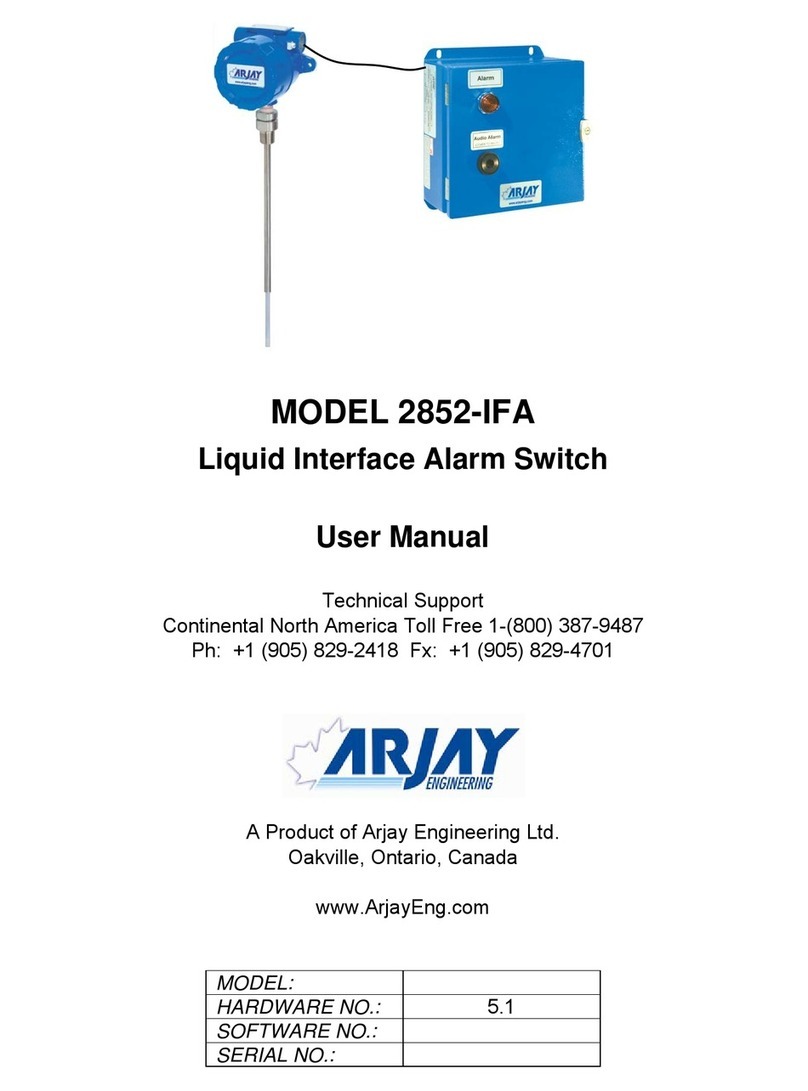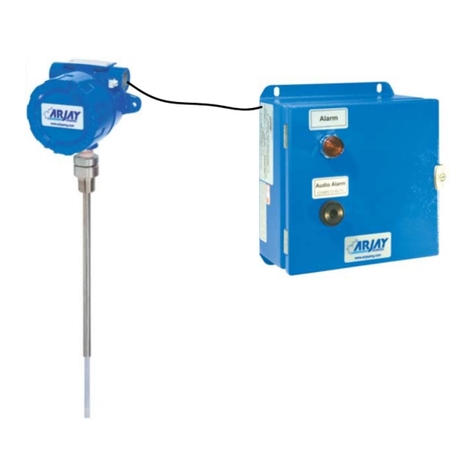
Model: 2852-LS User Manual Rev: 2.1
7
2.2 Probe Installation
The probe length is custom ordered to the tank or vessel requirements. On vertical and angled
installations, the probe must be long enough to reach the lowest alarm setpoint.
The PMC junction box should be mounted above any risk of flooding.
It is recommended to use a flange, union, or retraction device for easy retraction of the probe
from the vessel. This will also assist for routine testing and calibration.
Standard probe entry into a tank is via a 3/4" NPT opening (standard probes) or 1" NPT opening
(heavy duty probes). Flanges and concentric shields are available as options. The entrance
configuration may vary depending on the application requirements.
TO SCREW IN THE PROBE (THREADED ENTRY) USE A WRENCH ON THE LOWER
FITTING ONLY. The probe fittings are compression type with Teflon ferrules assembled by
applying torque between the two hex sections. The fittings are sealed at the factory to provide a
compression seal capable of withstanding high pressures. Once opened they cannot be
reassembled without new ferrules.
The probe orientation can be vertical or angled Concentric shields can be considered for
improved linearity. Shields should only be used on clean separations where clogging from a rag
(emulsion) layer is not a concern. The following points are important when installing the probe:
1- Reference ground: This is VERY IMPORTANT for accurate measurements and is typically
the metal walls of the tank. For non-metallic tanks, a concentrically shielded probe is
recommended in which case the shield provides its own Ground. IMPORTANT: For
standard threaded entry and flange entry probes (without concentric shields), make sure the
fittings are clean to ensure a GOOD ELECTRICAL CONNECTION BETWEEN THE PROBE
HEAD ENCLOSURE AND THE TANK (REFERENCE GROUND).
2- The distance between the probe and the ground reference: This only applies to probes
without concentric shields. The closer the distance to the tank wall, the greater the
sensitivity of measurement; too close and bridging problems may occur.
3- The degree of parallelism between the probe and the reference ground: The probe
must be parallel to the reference ground for a linear output signal. Note: the concentric
shield option is inherently linear due to the concentric shield.
4- The measurement accuracy may be affected by the temperature change of the
material in the tank. The amount of measurement error depends on the material. If the
temperature change is excessive, temperature correction may be required. Contact the
Arjay representative for more information.
5- Agitators or moving objects in the tank: Moving objects in the tank close to the probe
such as agitator blades, moving baffles etc. appear as moving ground references to a
capacitance probe and will cause measurement errors. In applications where these objects
are present, a concentrically shielded probe should be used.
CAUTION: INSTALL THE PROBE WITH CARE: THE TEFLON SHEATH IS USED TO
ELECTRICALLY ISOLATE THE METAL PROBE FROM THE LIQUID. DAMAGE CAUSING LEAKS MAY
CAUSE READING ERRORS.






























